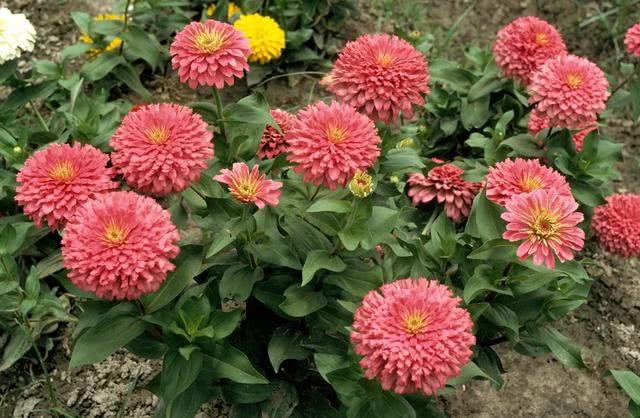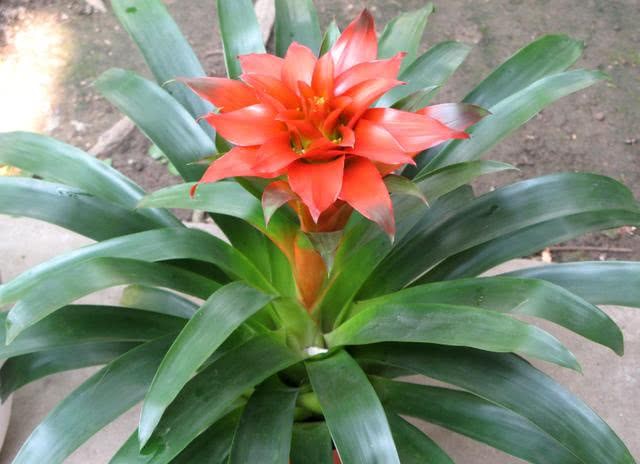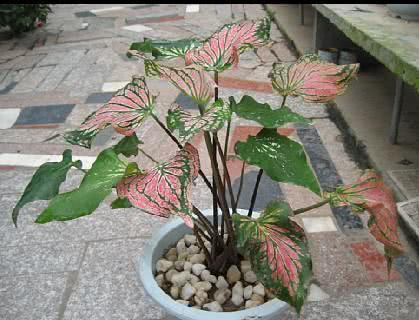Fireball flowers bloom for a long time, strong ornamental cuttings, pay attention to disinfection, and the pots will be full of flowers.

Zinnia, also known as fireball, its plant height is moderate, the general adult zinnia is usually about 50-80 cm, the bud has multiple flowers, and the leaf surface has a little fluff, the edge of the flower color is black, and most of them are crimson or fuchsia. Because of its large flowers and long flowering time, both tall and short varieties are very suitable for planting in flower beds or family potted plants.
First, the cultivation of zinnia
Seed and cutting propagation are common ways to cultivate zinnia. If seeds are used to cultivate zinnia, the growth cycle is longer, so the method of cutting is easier to manage on the robust zinnia plant. usually choose from the side branch part of the plant, cut off the branches used for cutting, generally at about 8 cm It is also required to keep about 3-5 bud holes on the branches to facilitate the survival rate of cuttings.
In addition, in the process of cutting, containers and basin soil need to be thoroughly disinfected, otherwise the branches are extremely vulnerable to bacterial infection. Usually, the branches can take root quickly after a week or so after cutting. at this time, the management of potted plants is only on watering, and can not be exposed to too much sunlight. It is necessary to wait until the seedlings grow to a certain number of leaves. Potted plants can be placed in a suitable environment for management.
II. Maintenance of zinnia
1. Lighting requirement
Because zinnia is a positive plant, it is necessary to maintain good light conditions for most of the time of plant growth, and to keep the environmental temperature of plant growth within a suitable range as much as possible. In addition, zinnia is more suitable for receiving the scattering of sunlight rather than direct sunlight, so potted plants are best placed in the backlight to grow, and if necessary, the plants need proper shade to avoid the strong sun directly leading to the excessive growth of branches and the yellowing of leaves.
two。 Moisture requirement
On the other hand, the drought tolerance of zinnia is relatively poor, which leads to the need to keep the soil in a relatively humid state and has certain requirements for the daily watering of plants. In general, in addition to the summer season, usually maintain the habit of watering every three days or so, winter can be reduced according to the actual situation, and the temperature in summer is higher, so the water in the plant evaporates faster, basically need to be watered once a day, and the time is best in the early morning of every day.
3. Fertilization requirements
After entering the seedling stage, zinnia needs regular fertilization, because the plant growth shows seasonal changes, in other words, in different periods or seasons, the nutrient needs of zinnia are also quite different. If in spring and summer, according to the actual situation, you can top fertilize once in about 15 days on average, but after entering winter, the growth rate of plants is relatively slow, so the amount of fertilizer should be greatly reduced. Generally, you only need to apply fertilizer once or twice throughout the winter.
- Prev

Bonsai Dennis pineapple conservation skills how many shapes and colors are refreshing
Dennis pineapple alias, also known as Dennis Star, its leaves are green, smooth and transparent, with no special stripes, and the overall feeling is very brief; while the spikes and pedicels are red, surrounded by several red buds.
- Next

Flower and leaf taro bonsai maintenance is skillful, light soil should pay attention to growing large flowers is easy
Flower-leaf taro alias is also known as colored-leaf taro, its leaf shape is oval or nearly heart-shaped, and the color is relatively bright, usually the middle of the leaf is bright red, while the outer leaf is green, so people often call it "two-color taro"; in addition.
Related
- Wuhan Hospital Iron Tree Blooming Result Was Instantly Frightened by the Gardener Master
- Which variety of camellia is the most fragrant and best? Which one do you like best?
- What is the small blue coat, the breeding methods and matters needing attention of the succulent plant
- Dormancy time and maintenance management of succulent plants during dormancy
- Minas succulent how to raise, Minas succulent plant pictures
- What are the varieties of winter succulent plants
- How to raise succulent plants in twelve rolls? let's take a look at some experience of breeding twelve rolls.
- Attention should be paid to water control for succulent plants during dormant period (winter and summer)
- Watering experience of twelve rolls of succulent plants
- Techniques for fertilizing succulent plants. An article will let you know how to fertilize succulent plants.

